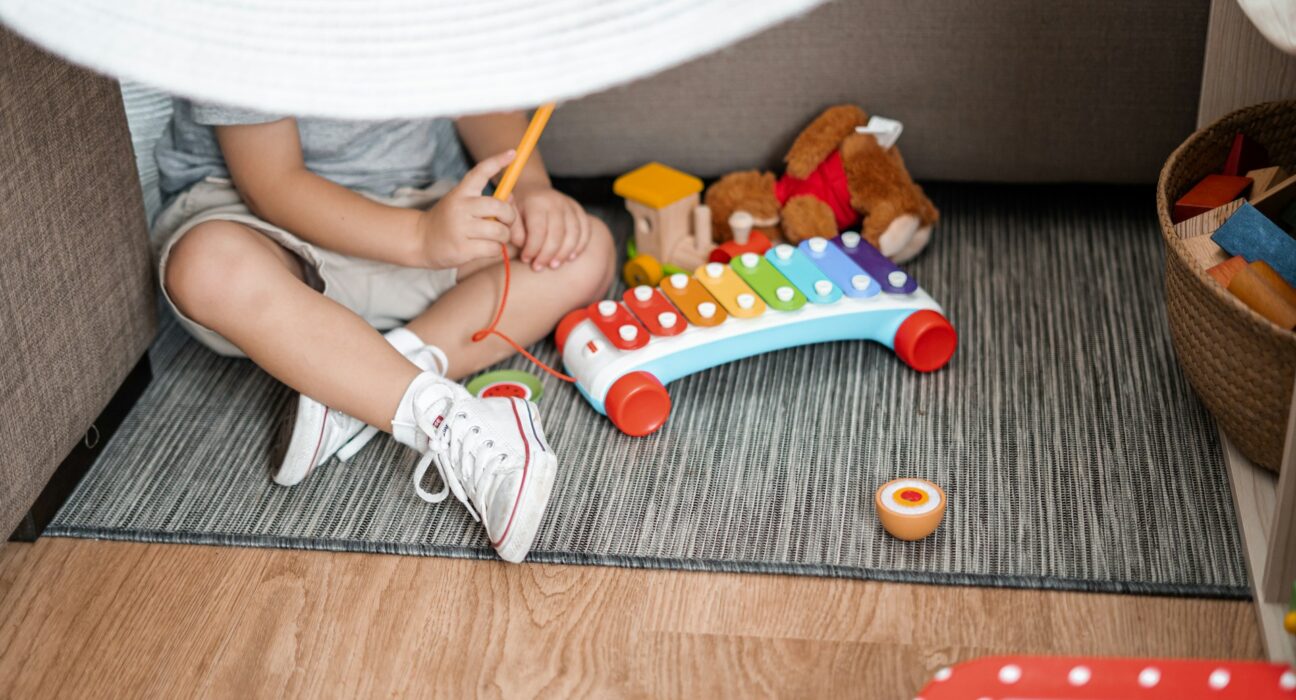Social media feeds overflow with perfectly curated playrooms featuring expensive wooden toys and designer learning materials, leaving many parents wondering if quality early childhood education requires a premium price tag. The reality is refreshingly different: you can foster rich learning experiences and developmental growth without the costly brand names or picture-perfect setups.
Effective budget parenting isn’t about cutting corners on your child’s education—it’s about understanding that meaningful learning happens through engagement, exploration, and authentic experiences rather than expensive products. The principles that guide child-centered development focus on simplicity, accessibility, and purposeful activities that can be achieved with creativity and household resources.
When you shift focus from acquisition to innovation, everyday items transform into powerful learning tools. Your kitchen becomes a laboratory for practical life skills. Your backyard becomes a natural classroom. This approach to creating learning environments emphasizes thoughtful choices over costly purchases, proving that the most valuable educational experiences often come from the simplest materials.
The key lies in recognizing that children learn best through hands-on exploration, meaningful work, and activities that respect their natural curiosity and developmental pace. These fundamental needs can be met beautifully within any budget when you understand what truly supports a child’s growth.
Transforming Your Kitchen Into a Learning Laboratory
Practical Life Skills Through Everyday Tasks
Your kitchen contains an abundance of educational opportunities that surpass many commercial learning products. Simple activities like measuring ingredients, washing vegetables, or setting the table provide authentic learning experiences that build real-world skills while contributing meaningfully to family life.
Children develop mathematical concepts through measuring cups and spoons, learning volume, quantity, and proportional relationships naturally. They practice fine motor skills by stirring, pouring, and arranging items. These practical life activities cost nothing beyond your regular grocery budget while providing rich developmental benefits.
Sensory Exploration Through Natural Materials
Transform basic kitchen staples into engaging sensory experiences. A shallow tray filled with rice or dried beans becomes a perfect medium for practicing letter formation, number recognition, or simply exploring texture. Different-sized containers teach concepts of volume while developing hand-eye coordination through pouring and transferring activities.
Water play at the kitchen sink offers endless possibilities for learning about cause and effect, measurement, and scientific principles. Add measuring cups, funnels, or strainers to extend the experience. These minimalist toys provide hours of focused engagement while supporting multiple areas of development.
Creating Independence Through Accessible Storage
Organize kitchen materials at your child’s eye level using simple storage solutions. Low drawers or baskets can hold child-safe utensils, making it possible for young learners to prepare their snacks or help with meal preparation independently.
This accessibility builds confidence and practical skills while teaching responsibility. Children learn to care for materials and understand their role in family routines, creating authentic purpose for their activities.
Building Learning Spaces With Creative Adaptations
Furniture Solutions That Serve Multiple Purposes
Child-sized furniture isn’t necessary for creating effective learning environments. Regular dining chairs paired with cushions can provide appropriate seating height. Coffee tables become perfect work surfaces for puzzles, art projects, or practical life activities when children kneel on floor cushions or small stools.
Low bookcases or even cleared areas of existing furniture can display learning materials attractively and accessibly. The goal is to create organized, beautiful spaces where children can choose activities independently and work comfortably.
Storage Systems That Encourage Independence
Organization matters more than expensive storage solutions when implementing budget parenting strategies. Clear containers allow children to see and select materials independently. Repurposed jars, boxes, or baskets can be labeled with pictures and words to help children understand where materials belong.
This systematic approach teaches order and responsibility while making it possible for children to maintain their environment independently. Simple organization systems work more effectively than complex storage products because they’re easier for children to understand and maintain.
Flexible Spaces That Adapt Throughout the Day
Your living areas can serve multiple educational purposes without requiring dedicated playrooms. Mornings might bring practical life activities like folding laundry or watering plants. The afternoon could feature art projects on the same surfaces. Evening might transform the space into a cozy reading area.
This flexibility teaches children that spaces can serve various purposes while eliminating the need for specialized rooms or furniture. It also models resourcefulness and adaptability—valuable life skills that extend beyond childhood.
Natural Learning Through Environmental Exploration
Outdoor Classrooms in Any Setting
Whether you have a large backyard or a small balcony, outdoor spaces provide rich learning opportunities that complement any Montessori at home approach. Gardens teach responsibility, patience, and scientific observation as children care for plants and observe growth cycles.
Even apartment dwellers can create meaningful outdoor experiences through container gardening, bird watching, or nature walks in local parks. These activities cost little but provide authentic connections to the natural world that support multiple areas of development.
Seasonal Activities Using Natural Materials
Each season offers unique materials for learning activities. Autumn leaves become sorting and classification exercises. Winter snow provides sensory experiences and scientific observations. Spring flowers can be pressed, counted, or used for color-matching activities.
These seasonal explorations teach children to observe their environment while providing ever-changing materials for creative play. Natural materials often engage children more deeply than manufactured toys because they connect to the broader world rather than existing in isolation.
Science Discovery Through Simple Observation
Encourage scientific thinking through everyday observations that require no special equipment. Watching shadows change throughout the day, observing weather patterns, or noting which plants need water develops observational skills and scientific reasoning.
Simple experiments using household materials can demonstrate basic principles. Floating and sinking experiments in the bathtub, color mixing with food coloring, or growing seeds in glass jars provide authentic scientific experiences that spark curiosity and understanding.
Developing Fine Motor Skills Through Purposeful Activities
Art Experiences With Basic Materials
Rich artistic experiences don’t require expensive supplies or elaborate setups. Basic crayons, paper, and simple craft materials provide endless creative possibilities. Focus on process rather than product, allowing children to explore materials freely without pressure to create specific outcomes.
Drawing, cutting, gluing, and painting all develop fine motor skills while providing emotional expression outlets. These minimalist toys—simple art supplies—often provide more sustained engagement than complex activity kits because they allow for open-ended creativity.
Threading, Sorting, and Classification Activities
Create fine motor practice opportunities using household items. Large buttons become threading activities when paired with shoelaces or yarn. Different-sized containers provide sorting practice for small objects like coins, shells, or pasta shapes.
These activities develop the precise hand movements necessary for later writing while teaching classification, patterning, and logical thinking skills. They cost virtually nothing but provide focused, concentrated work that children find deeply satisfying.
Practical Handwork That Builds Competence
Simple sewing projects using large needles and cloth, basic woodworking with child-safe tools, or gardening activities all provide meaningful handwork experiences. These activities develop hand strength and coordination while teaching patience and attention to detail.
Children feel genuine pride in creating useful items or contributing to family needs through their hand work. This authentic purpose motivates sustained effort and builds confidence in their abilities.
Language Development Through Rich Experiences
Storytelling and Conversation Opportunities
Language development flourishes through rich conversations and storytelling experiences that cost nothing but provide immense value. Describe daily activities as they happen, ask open-ended questions about your child’s observations, and create stories together during quiet moments.
Reading together remains one of the most powerful educational activities available. Library books provide access to high-quality literature without purchase costs. Focus on interactive reading that encourages questions, predictions, and connections to your child’s experiences.
Writing Experiences Using Natural Materials
Before children write with pencils, they can practice letter formation in sand trays, finger paint on windows, or trace letters in spilled flour on kitchen counters. These multisensory experiences support letter recognition and formation while providing tactile learning opportunities.
Simple journals made from folded paper allow children to record their observations, experiences, or creative stories. These authentic writing purposes motivate careful attention to letter formation and spelling while creating meaningful documentation of their learning journey.
Vocabulary Building Through Real Experiences
Rich vocabulary develops through exposure to varied experiences and precise language use. Cooking activities introduce measurement terms, texture words, and process vocabulary. Nature exploration adds descriptive language for colors, shapes, and natural phenomena.
Use specific terminology when describing activities or observations. Children absorb sophisticated vocabulary when it’s used naturally in meaningful contexts rather than through artificial vocabulary lessons.
Mathematics Discovery Through Daily Life
Number Recognition and Counting Practice
Mathematical concepts emerge naturally through daily activities when you highlight numerical relationships. Counting steps while walking, identifying numbers on houses or signs, and noting quantities during cooking all provide authentic number practice.
Simple games using household items can reinforce mathematical concepts. Counting games with buttons or stones, pattern creation with natural materials, or basic addition and subtraction using snacks all provide meaningful mathematical practice.
Measurement and Geometry Exploration
Cooking provides constant opportunities for measurement practice using standard kitchen tools. Children learn about volume, weight, and proportional relationships through authentic activities that produce tangible results.
Geometric concepts develop through building activities with blocks, boxes, or natural materials. Comparing shapes, sizes, and spatial relationships happens naturally during play with simple materials rather than requiring specialized geometric toys.
Problem-Solving Through Real Challenges
Present authentic problems that require mathematical thinking. How many plates do we need for dinner? How can we divide these crackers equally? Which container holds more water? These real-world challenges motivate mathematical reasoning more effectively than abstract worksheets.
Encourage multiple solution strategies and celebrate creative problem-solving approaches. This builds mathematical confidence while teaching that there are often multiple ways to approach challenges.
Creating Community and Cultural Connections
Learning About Different Cultures Through Food and Stories
Explore different cultures through cooking traditional foods, reading folktales from various countries, or learning simple phrases in different languages. These experiences broaden your child’s understanding while requiring minimal financial investment.
Library resources often include cultural materials, cookbooks, and music from different traditions. Community cultural centers sometimes offer free or low-cost programs that provide authentic cultural experiences.
Building Social Skills Through Community Involvement
Participate in community activities that provide social learning opportunities. Farmers’ markets, library programs, or neighborhood gatherings allow children to practice social skills while learning about their broader community.
Volunteer activities appropriate for families, such as helping elderly neighbors or participating in community clean-up projects, teach empathy and social responsibility while providing meaningful work experiences.
Developing Global Awareness Through Simple Activities
Create awareness of global connections through everyday activities. Discuss where food comes from, locate places on maps or globes, or learn about different climates and environments through books and conversations.
These discussions can happen naturally during meals, while looking at family photos, or during nature walks. Global awareness develops through accumulated small conversations rather than formal geography lessons.
Sustaining Learning Through Observation and Adaptation
Building an effective learning environment requires ongoing observation of your child’s interests, developmental needs, and changing capabilities. This responsive approach ensures that activities remain engaging and appropriately challenging while staying within budget constraints.
Regular rotation of materials keeps experiences fresh without requiring constant purchases. Storing some items out of sight and bringing them back after several weeks creates renewed interest in familiar materials.
The most valuable investment in your child’s education is your attention, patience, and willingness to follow their natural curiosity. When you understand that learning happens through exploration, meaningful work, and authentic experiences, you can create rich educational opportunities regardless of your budget.
Start by observing what genuinely captures your child’s interest, then look for ways to extend and deepen those experiences using materials you already have. Remember that sustained engagement and joy in learning matter more than expensive materials or perfect environments.







